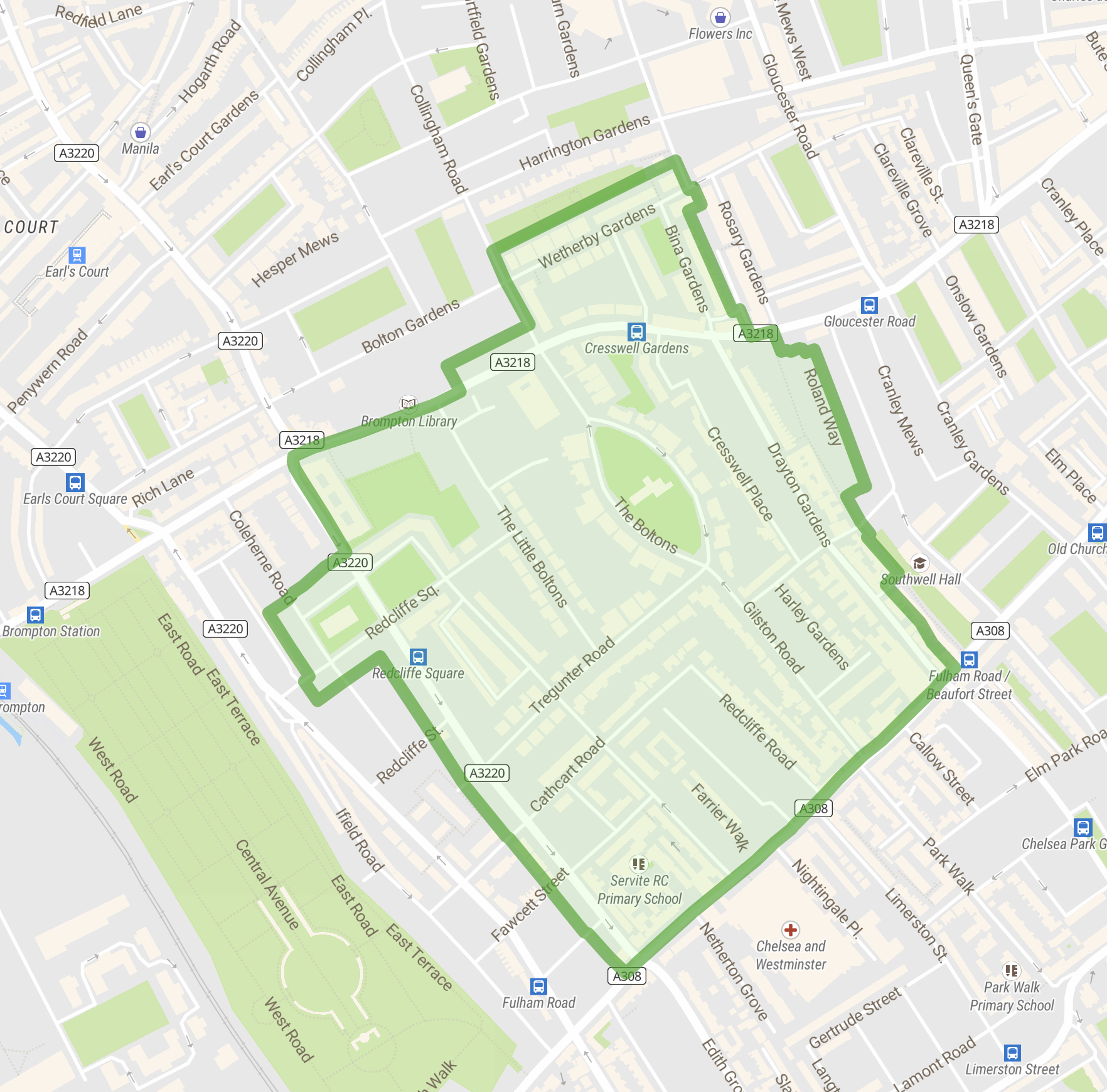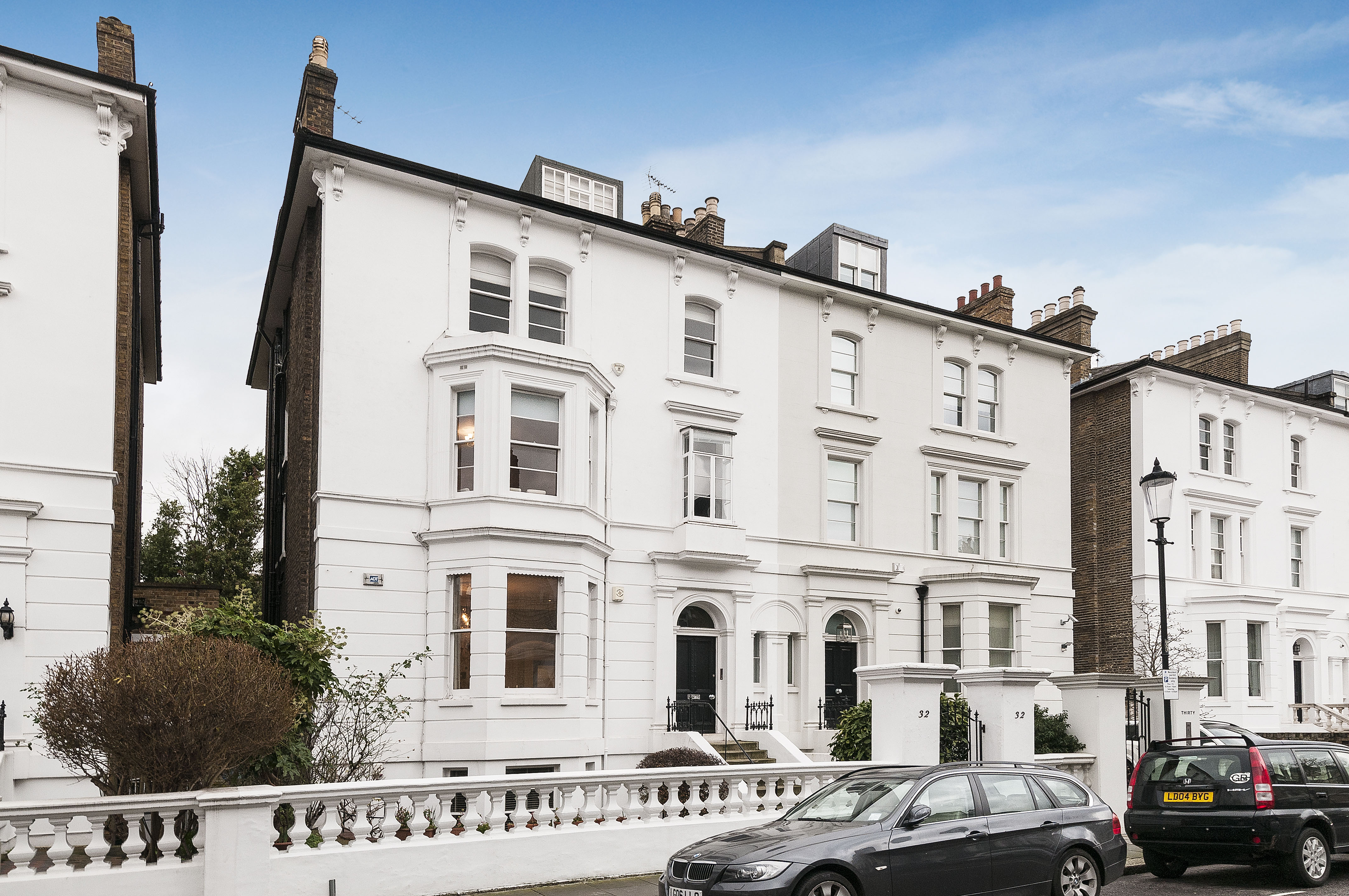The Boltons Conservation Area is one of the most attractive conservation areas in London stretching from Old Brompton Road south to Fulham Road and from Roland Way west to Finborough and Ifield Roads.

The Boltons is a street and garden square of lens shape, the opposing sides of the street face the communal gardens as two non-semicircular crescents with large houses. The gardens of The Boltons are Grade II listed on the register of historic parks and gardens.
The Boltons was built in the middle of the 19th century by architect and journalist George Godwin on land which was originally market gardens. Godwin built the houses on the west side in 1857–60, after which development rapidly spread westward, beginning with the Little Boltons and ultimately extending to the edge of Brompton cemetery. The Boltons’ stuccoed Italianate mansions verge on the palatial, are rich in ornamental detail and are all now grade II listed.
The area is believed to have been named after William Bolton (or Boulton) who bought land in the area in 1795. Twelve years later Bolton sold the land between the Old Brompton Road and the Fulham Road to the confectioner James Gunter. Gunter died in 1819 and his son Robert inherited the estate. He added lands and began to lease parcels for housebuilding. The area is within The Boltons Conservation Area set up in 1970 by the local authority.

Positioned on the raised ground floor of a handsome semi-detached period villa, a newly modernised and highly civilised one-bedroom apartment (910sq ft / 85 sqm approximately), enviably situated in the heart of the Boltons Conservation area.
Some of the houses were converted to flats; others were adapted for institutional use. For 15 years after World War II "going to the Boltons" meant to locals going to school. On either side of Boltons Place were two schools: Virgo Fidelis RC Junior Girls School and state primary Bousfield School, which remains. 29 The Boltons, on the junction of Tregunter and Gilston Roads, housed the infants' reception and two primary classes with a garden play area, as part of the nearby Lycée Français Charles de Gaull. As the main school in South Kensington expanded in the late 1950s, its location consolidated and the name changed to Lycée Français Charles de Gaulle. Many properties have retained or been returned to, their original purpose as single-family houses.
St Mary the Boltons church interrupts the garden, consecrated on 22 October 1850, the spire of which was added in 1854. The interior was rearranged in 1872 and in 1952. Its modest two-storey hall was attached in 1965–6.

